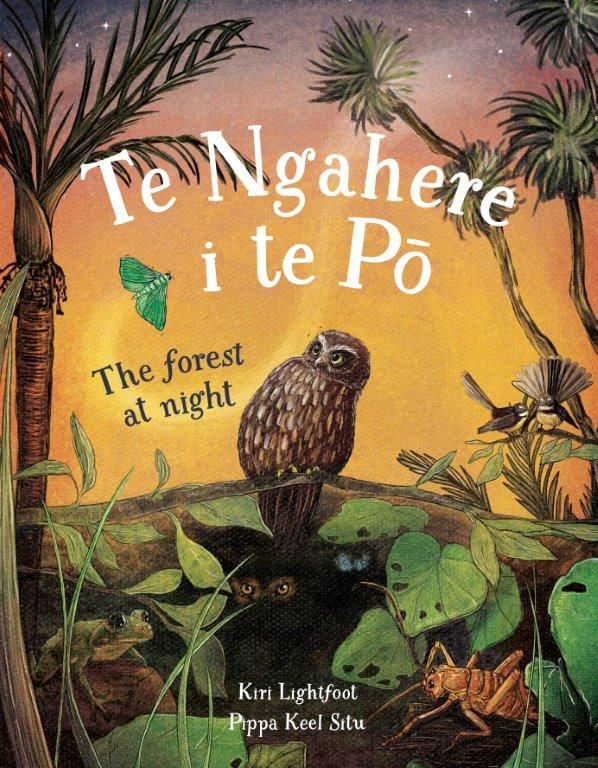Te Ngahere I te Pō: The Forest at Night by Kiri Lightfoot and Pippa Keel Situ
- NZ Booklovers

- Aug 19, 2025
- 3 min read

Te Ngahere I Te Pō.The Forest at Night is a beautiful new picture book by award-winning author Kiri Lightfoot. This soothing, gentle story would make a perfect bedtime read for tamariki and is also an excellent introduction to the fascinating world of the special creatures who hide away in the forest during the day and only come out at night.
It was during a nighttime walk in the Waitākere ranges that Kiri Lightfoot witnessed the handover between the creatures of the day and those that wake at night.
I had tingles as the ranger spoke about how magical nighttime is in the forest. We listened to ruru and saw many of the creatures mentioned in the story.
It inspired her to write Te Ngahere I Te Pō: The Forest at Night. The story begins as night falls and tiēke, kōkako, pīwakawaka and kererū are finding a place to rest in the ngahere. Tui sings them a goodnight lullaby. Kia pai te moe. Goodnight manu.
Then, other special creatures who have been asleep and hiding away all day start to wake up and make an appearance. Who will watch over them all? Ruru will. In Māori mythology ruru is a watchful guardian.
The stunning full page realistic coloured illustrations of the nocturnal creatures by talented illustrator Pippa Keel Situ show them bathed in the soft magical light of the moon.
The words that describe how they move in different ways are well chosen. Kiwi snuffles and shuffles in the leaves looking for kai, pekapeka (bats) swoop from hollowed trees and caves and pupurangi (kauri snails) are sliding across the forest floor.
The playful way typography is used to visually express movement also helps to emphasize this e.g. kōura scuttle from under rocks to find kai in the awa.
Usually in bilingual storybooks for children the Te Reo and English versions are placed side by side but in this picture book they are woven together (where an unfamiliar te reo word does need translating into English it has been placed elsewhere in the forest in small print so as not to detract from the story). This reflects the way many of us, both adults and children, increasingly intermingle English and Te Reo words when we speak. And it works really well in this book, the story flows naturally and smoothly and it is a pleasure to read aloud.
At the end of the story, before dawn arrives and the ngahere will once again come alive with birdsong, it is time for the nocturnal creatures to disappear. Tamariki will also be ready to drift off to sleep. It is time to wish them all Pō Mārie, goodnight,
Tamariki from three years up will love this special story and for older children who want to know more there is further interesting information about the nocturnal creatures on a page at the back of the book. It may well whet their appetite for asking their parents if they can go on a nighttime excursion into the ngahere with a ranger, which some of our sanctuaries offer.
We have stayed overnight on Tiritiri Matangi Island in the bunk house and, while going out for an unguided night walk, heard a rustling in the bush and then two little spotted kiwi suddenly dashed across our path. It was an unforgettable experience!
Reviewer: Lyn Potter
Allen & Unwin



